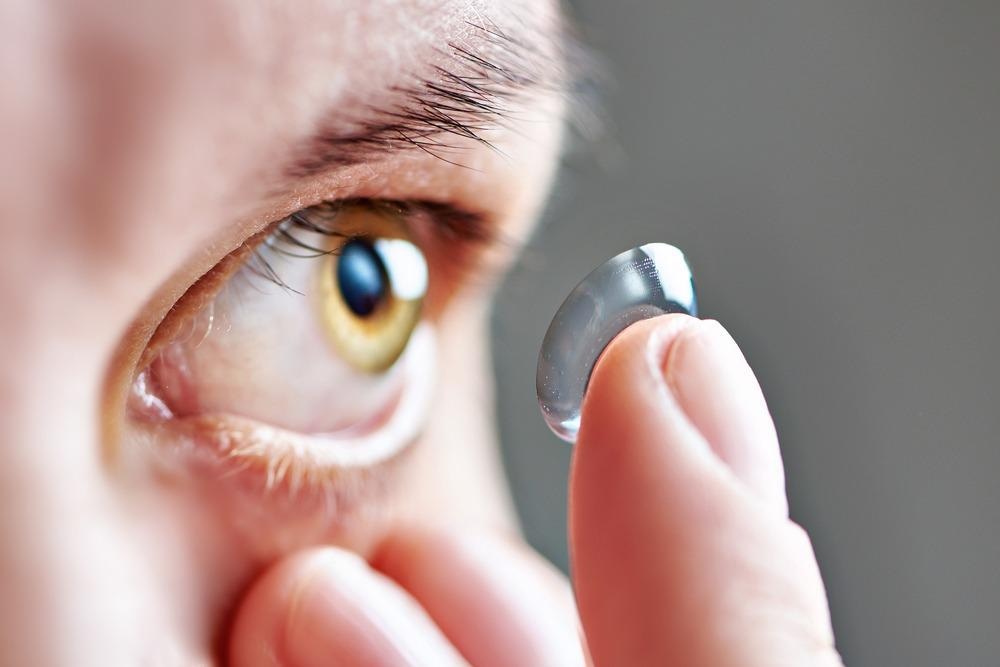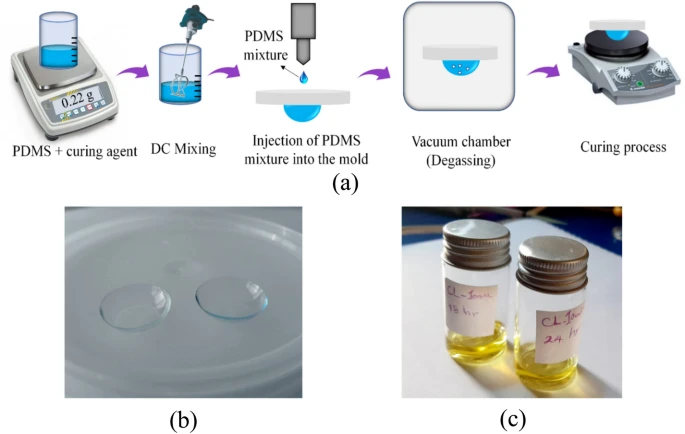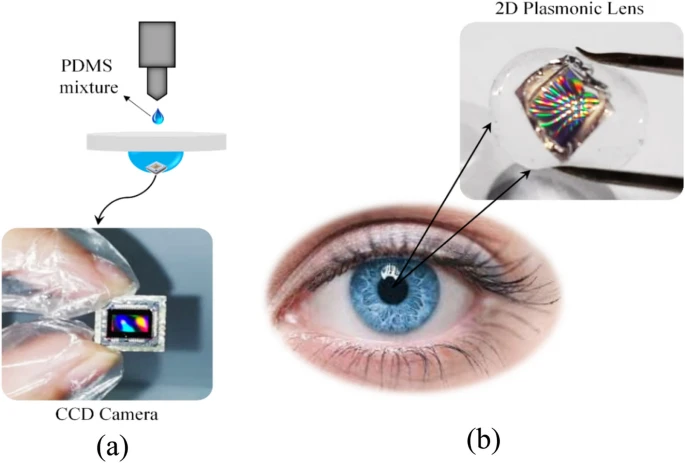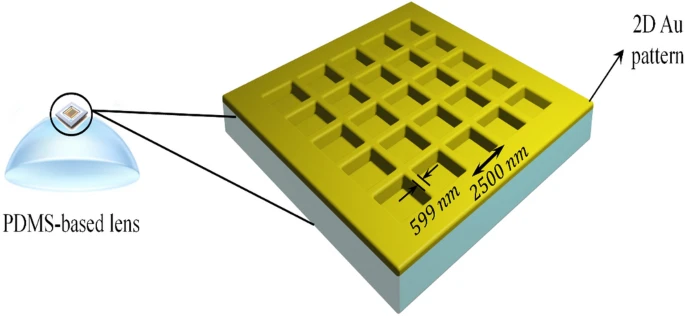In a study published recently in the journal Scientific Reports, two-dimensional biologically compatible and elastic plasmonic contact lenses were created utilizing polydimethylsiloxane (PDMS).

Study: Two-dimensional biocompatible plasmonic contact lenses for color blindness correction. Image Credit: Sergey Ryzhov/Shutterstock.com
Here, an inexpensive, basic design on the basis of the gentle nano-lithography technology, was devised and tested for correction of red–green color blindness.
Color Blindness, Explained
Human color perception is derived from three kinds of cone-like photoreceptive cells, namely long (L), medium (M), and short (S) cones, that are essential for seeing red, green, and blue hues with spectrum sensitivity maxima at 430, 530, and 560 nanometers, respectively.
Color blindness, also known as color vision deficiency (CVD), is an eye condition that hinders the detection and interpretation of distinct colors by three photoreceptive cells that are functional and operate according to their spectrum sensitivity maxima in normal vision. This eye condition, which may be contracted or genetic, is caused by a loss or deficit of cone-like photoreceptive cells.

Figure 1. (a) A schematic array of the fabrication process of the proposed PDMS-based lenses, (b) the image of the fabricated PDMS-based lenses, and (c) immersing the PDMS-based lenses into HAuCl4·3H2O gold solution for different incubation times. © Roostaei, N., & Hamidi, S. M. (2022)
Different Types of Color Blindness
CVD is classified into three categories: dichromacy, monochromacy, and anomalous trichromacy.
Dichromacy develops if one of the three cone-like photoreceptive cell types is entirely absent; and is classified as protanopia (absence of red cone-shaped photoreceptors), deuteranopia (absence of green cone-shaped photoreceptors), or tritanopia (missing blue cone-shaped photoreceptors).
Monochromacy is the most uncommon kind of color blindness, characterized by the absence of at minimum two cone-like photoreceptive cell types.
Monochromats are either fully colorblind (achromatopsia) or only have blue cone-like photoreceptive cells. Anomalous trichromacy, the third category, arises if one of the cone-like photoreceptive cell types is faulty.
Anomalous trichromacy is classified into three types based on which cone-like photoreceptive cell type is flawed: deuteranomaly (flawed green cone-shaped photoreceptors), protanomaly (flawed red cone-shaped photoreceptors), and tritanomaly (flawed blue cone-shaped photoreceptors).
Protans (protanomaly and protanopia) and deutans (deuteranomaly and deuteranopia), colloquially referred to as red color blindness, are the most typical kinds of color blindness.
In protanomaly, the spectrum sensitivity crest of the red cone-shaped cells is blue-shifted, while the sensitivity maximum of the green cone-shaped cells is red-shifted. As a result of the clashing spectral sensitivities of green and red photoreceptors, patients are unable to differentiate between distinct hues.

Figure 2. (a) A schematic of the fabrication process of the proposed 2D plasmonic contact lenses based on PDMS, and (b) the real image of the fabricated 2D flexible plasmonic contact lens. © Roostaei, N., & Hamidi, S. M. (2022)
Remedial Measures
Despite a great deal of valuable work into developing a surefire cure for color blindness based on several medical pathways of this condition, significant lifestyle adjustments remain an unsettled debate. Genetic therapy, colored spectacles, lenses, optic filters, photoelectronic glasses, and enhanced functionality on computers and mobile devices were among the topics covered in previous research.
Tinted eyeglasses with colored filters have been thoroughly researched and seem to be widely available for CVD treatment.
While these spectacles are successful for increased perception of color in colorblind persons, they have drawbacks such as a high price, weight and bulk, and lack of integration with other corrective eyewear.
For CVD correction, contact lenses developed with chemical pigments, plasmon meta-surfaces, and plasmonic nanoscale particles have lately been studied.
However, these contact lenses confront a number of obstacles, including lack of biocompatibility, limited use, poor stability, higher prices, and the intricacy of the production process.
PDMS-Based Lenses to Correct Color Blindness
The present work proposes two-dimensional biologically compatible and elastic plasmonic contact lenses predicated on polydimethylsiloxane (PDMS) for color blindness rectification, with special emphasis given to deuteranomaly (red–green) color blindness, the most frequent kind of color blindness.
PDMS is a biologically compatible, pliable, and transparent polymer that might be used to make contact lenses. This harmless and biologically compatible substance has found several uses in the biological, medical, and chemical industries.

Figure 3. A schematic array of the simulated 2D plasmonic contact lens based on PDMS. © Roostaei, N., & Hamidi, S. M. (2022)
Key Findings of the Study
In this work, two-dimensional biologically compatible and elastic plasmonic contact lenses made of PDMS were developed with an inexpensive and straightforward design using the gentle nanoscale lithographic approach and tested for deuteranomaly rectification.
The lens was made of PDMS, a hypoallergenic, harmless, elastic, and transparent polymer. This plasmonic contact lens, which is based on the plasmon surface lattice resonance (SLR) phenomenon, may be used as an excellent color filter for the rectification of deuteranomaly.
The suggested lens has good features such as durability, biocompatibility, and elasticity, making it suitable for color blindness corrective applications.
Reference
Roostaei, N., & Hamidi, S. M. (2022). Two-dimensional biocompatible plasmonic contact lenses for color blindness correction. Scientific Reports, 12. Available at: https://www.nature.com/articles/s41598-022-06089-8
Disclaimer: The views expressed here are those of the author expressed in their private capacity and do not necessarily represent the views of AZoM.com Limited T/A AZoNetwork the owner and operator of this website. This disclaimer forms part of the Terms and conditions of use of this website.